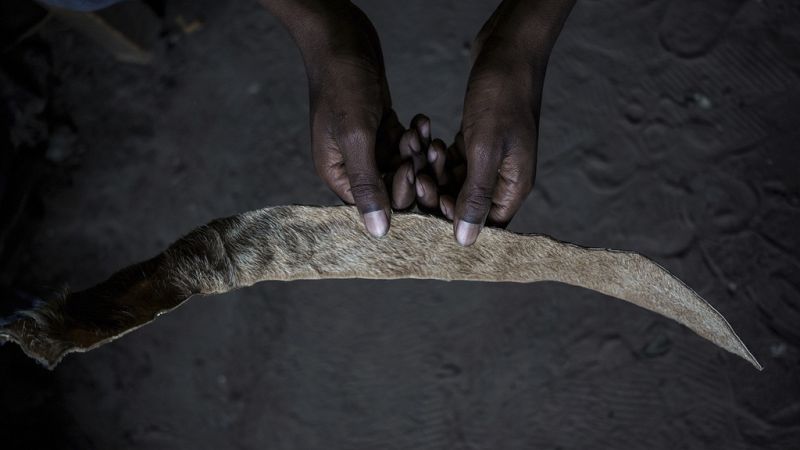Mystical beliefs are fueling Senegal’s illegal big cat trade

Niokolo-Koba National Park is the last sanctuary in Senegal for lions, which are critically endangered in West Africa.
Early in the morning park director Paul Diedhiou looks on as a group of armed park rangers march single file through the forest, guns at the ready.
They are one of nine brigades that work in the park, looking for poachers and miners who are trying to get their hands on the park’s vast gold deposits.
The lions are poached because of strong, deep-rooted beliefs in the mystical powers of their skins.
Driven by beliefs in the mystical powers of animal skin talismans known as “gris-gris,” illegal trade in leopard and lion parts is growing in Senegal, according to a new report by wild cat conservation group Panthera.
“People will kill, they will cut,” because of these beliefs, Diedhiou says. “Whether we agree with them or not, it exists.”
The rangers have more than 3,500 square miles to cover, and much of it can only be done on foot.
Sgt. Abdou Diouf, the head of the anti-poaching brigade, said that poaching is the most common illegal activity they see.
“Last year, during just one month, we apprehended 10 poachers and seven guns,” he says.
At the national park office in Tambacounda, an eastern Senegalese city around 50 miles from Niokolo-Koba, a small storeroom at the back of the compound overflows with confiscated lion and leopard skins, horns and animal skulls.
According to Panthera’s report, most come via public bus and trucks from East and South Africa. But the lions in Niokolo-Koba are impacted by the trade, too.
Panthera’s investigation found lion and leopard parts sold in 80 percent of markets surveyed, with 63 percent of artisans reporting increased sales in recent years.
For Niokolo-Koba’s lions, the impact has been devastating.
Despite enhanced protections that doubled the population to around 35 since 2017, an unsustainable average of two cats are still lost to poachers each year.
The only other place lions are found in West Africa is in the W-Arly-Pendjari Complex, a border region of Benin, Burkina Faso and Niger, and Panthera estimates there are fewer than 250 adults left in the region.
The skins are made into small talismans known locally as “gris-gris” that can be worn on a person’s body.
The gris-gris, prescribed by influential religious leaders called marabouts, are crafted from bits of skin with written prayers or Quranic verses sewn inside.
They are widely used across Senegal and are believed to give the wearer prestige, luck and protection.
Cheick Oumar Camara, a marabout based in Tambacounda, says he sometimes prescribes lion skin gris-gris.
“Lion skin can be prescribed to protect someone who’s traveling,” he says.
He said he wants Senegal’s lions to be protected, but was unaware how small the local lion population was.
One vendor told AP he can get a little over $3 (USD) for a small bit of skin that makes a single gris-gris. A lion belt can go for the equivalent of nearly $80, he said.
The Panthera report said an entire lion skin can fetch the equivalent of $1,900 or more.
Senegal’s hunting and wildlife laws are widely considered to be too lax, recent sentences for smuggling lion and leopard parts amounted to just one month in prison.
But the battle to protect Senegal’s lions is as much about culture as enforcement.
Diedhiou says it is important to educate people about the importance of lion conservation in order to change attitudes.
“We have to make them aware, for the sake of conservation. We have to talk to them. We also have to listen to them,” he says.
“If we want the population that lives around them to take ownership of the park, we have to involve them in the management.”
Since partnering with Niokolo-Koba in 2016, Panthera has helped strengthen security measures.
The conservation group tripled the park’s anti-poaching force from 20 to 60 agents, equipping them with vehicles and gear, while investing more than $7 million in infrastructure – including a ranger base with an airstrip, hundreds of camera traps, and new roads and bridges.
Today

